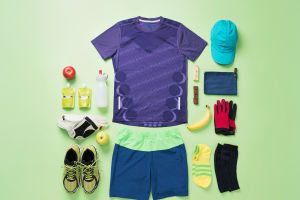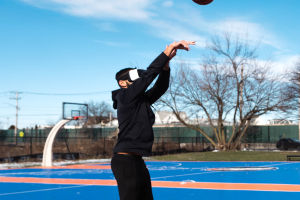Changwon: Coast & Blossoms
Friends, imagine a zigzag coastline stitched with islands, a planned city of wide boulevards and parks, and spring lanes bursting with pale petals.
Changwon blends three personalities—Masan, Jinhae, and Changwon—into one visitor‑friendly base with quick buses, bike lanes, and short rides to markets, museums, and lookout towers. Use this guide to plan 1–3 days with clear $ costs, best‑time windows, and smooth routes.
Masan Market
Korea’s largest seafood bazaar fills covered alleys with stalls and “hoetjip” eateries where sashimi sets typically cost $10–$20 per person. Go before noon for brisk auctions and fresher cuts. From Changwon center, local buses and taxis ($5–$12) reach the waterfront in 15–30 minutes.
Art Village
Changdong Art Village repurposes old shops into galleries, studios, and cozy cafés. Most small spaces are free; special shows run $2–$6. Visit 10:00–18:00 (many spots close Mondays). Combine with nearby streets for murals, ceramics, and handmade print stalls.
Burim Market
Next door, this 1920s market sells produce, tableware, hanbok rentals, and snack favorites. Street bowls of tteok‑bokki or fish‑cake soup run $2–$4. Arrive mid‑afternoon for cooler temps and fuller trays; bring small bills for quick purchases.
Garosu‑gil
A metasequoia‑lined “Cafe Street” beside Yongji Park, shines late afternoon when mountains peek between trees. Brunch plates $8–$14; pour‑over coffee $3–$5. Terraces bloom from April to October; winter brings clear views and quieter seats.
Marine Park
Linked by the 250‑meter Eumji Bridge, Changwon Marine Park clusters family stops on a breezy islet. Day bundles (aquarium‑style halls and exhibits) generally cost $8–$15, less for kids. Time a late visit to watch the bay glow at sunset.
Solar Tower
The park’s 120‑meter landmark doubles as an observatory with sweeping views of inlets and ridges. Typical tickets $4–$6. Go within two hours of sunset for warm light and easy skyline photos; windbreakers help on the deck.
Moonshin Museum
Explore sculpture and painting from a beloved modern artist inside a hilltop space with a bay‑view terrace café. Entry runs $2–$4; allow 45–75 minutes. Pair with nearby mural lanes for a half‑day of art and city vistas.
Mural Village
Gagopa Kkoburang‑gil weaves alley murals with lookouts toward Masan Harbor. It’s residential—keep voices low and stick to posted paths. Free to wander; 30–45 minutes fits a gentle climb and photo stops.
Hanok House
The House of Changwon preserves 14 late‑Joseon buildings around ponds, mills, and pavilions. Entry is usually free or a small donation; guided sessions on folk tools and daily life $3–$6. Near Jungang Station, it’s an easy hour‑long cultural pause.
Yongji Lake
Loop the 1.2‑km path for reflections of distant ridges and evening light shows (April–November, weather‑permitting). Free to enjoy; nearby kiosks sell snacks $1–$3. Visit at 19:30–20:30 in warm months for the fountain‑and‑music show.
Blossom Festival
Early April turns Jinhae’s lanes into petal tunnels dotted with pop‑up stages and food booths. Crowds surge 10:00–16:00; go just after sunrise or post‑dinner for calmer paths. Expect $1–$3 street bites and shuttle signs guiding flows across hotspots.
Yeojwacheon Stream
“Romance Bridge” spans a lantern‑lit stream under sweeping blossoms. Free entry; best 18:30–21:00 for lights, or dawn for roomier photos. Weeknights beat weekends; follow one‑way walk arrows during peak evenings.
Junam Wetlands
North of the city, these reservoirs host wintering flocks and summer lotus fields. Visitor center exhibits are free; guided hides and bike loans often cost $0–$3. Bring binoculars, a brimmed hat, and layered clothing for breezy paths.
Drama Set
South of Masan, the Marine Drama Open Film Set recreates a wooden harbor village used by period productions. Entry typically $2–$4; allow 45–60 minutes. Bus lines 63/64/65 connect; weekdays are quieter for photos.
Sang Sang‑gil
In the art village, this “dream street” lays thousands of name tiles along a short stroll. Free, quick, and near cafés—great as a final stop after galleries. Check the cultural center for rotating mini‑exhibits.
Getting around
- To Changwon: KTX to Changwon/Changwon Jungang via Busan or Miryang (often $8–$18); intercity buses from Busan or Daegu run 60–90 minutes ($4–$12).
- In town: City buses cover all districts; taxis are $4–$12 for most hops. Public bikes (app‑based) cost roughly $1–$3 per hour.
- Stays: Mid‑range hotels $60–$120; boutique rooms near parks $80–$150. Book early for early‑April weekends.
Smart timing
- Spring (Mar–Apr): Flowers and mild days; reserve transport and stays in advance.
- Summer (Jun–Sep): Café terraces and marine breezes; pack a light rain shell.
- Winter (Dec–Feb): Clear skyline days; wetlands birding peaks.
Food notes
Seafood platters at market eateries run $10–$20 per person; café lunches $7–$12; desserts $3–$6. Card payments are widely accepted; carry small cash for markets and buses.
Conclusion
Changwon shines when days braid markets and murals with lake loops and island views—short rides, big variety. Which trio fits first: Masan Market plus art lanes and a sunset tower, an early‑morning blossom walk with Yongji’s evening show, or wetlands biking capped by Garosu‑gil coffee under trees?
-
 Future of Smart SportswearHow Smart Fabrics Are Revolutionizing Sports Clothing for Performance and Comfort
Future of Smart SportswearHow Smart Fabrics Are Revolutionizing Sports Clothing for Performance and Comfort -
 Virtual Reality in SportsHow VR is Transforming Training and Performance in Professional Sports
Virtual Reality in SportsHow VR is Transforming Training and Performance in Professional Sports -
 Best Skin Tints!Can A Tint Make Skin Look Fresh And Dewy Instantly? These Shades Prove It’s Possible!
Best Skin Tints!Can A Tint Make Skin Look Fresh And Dewy Instantly? These Shades Prove It’s Possible!
Copyright © zogu 2021 - 2025. All Right Reserved.